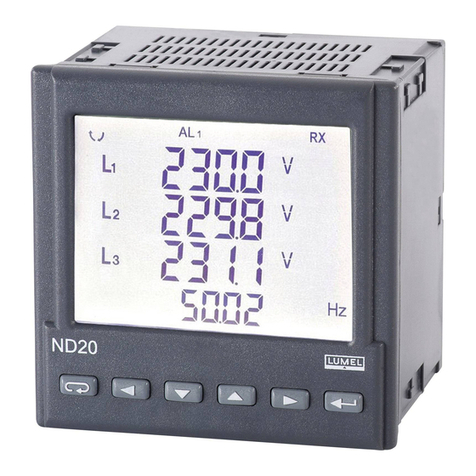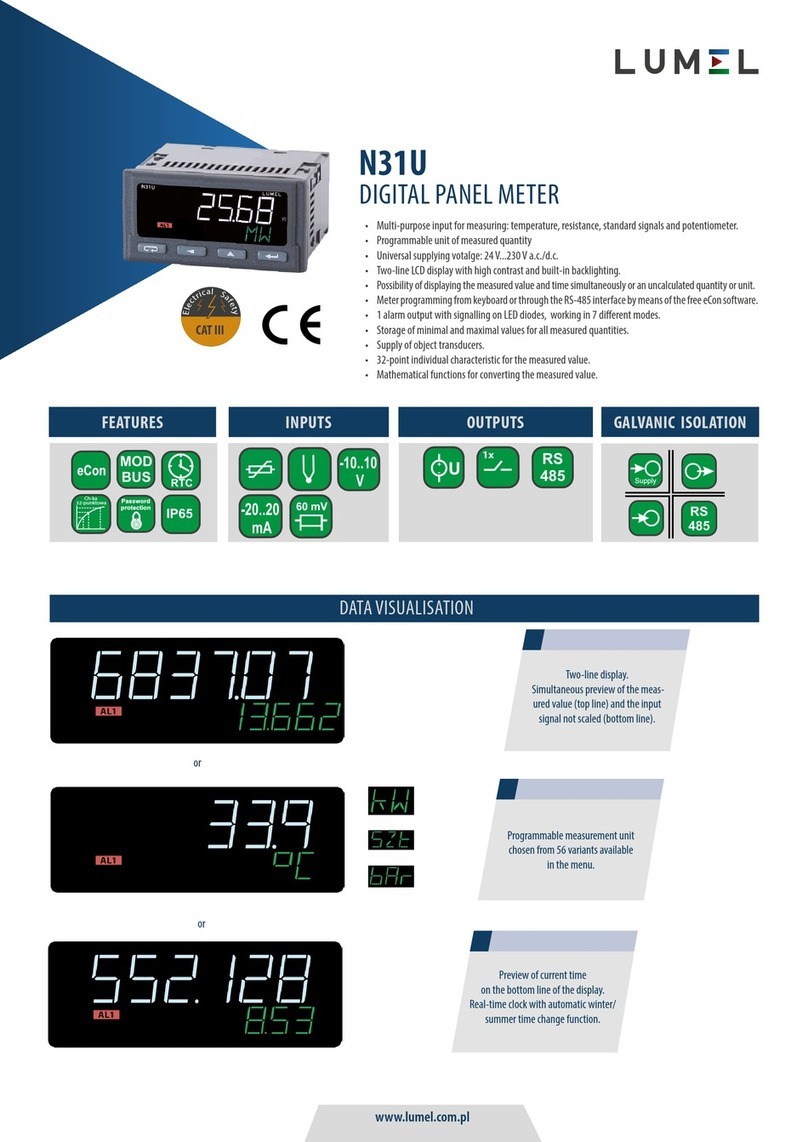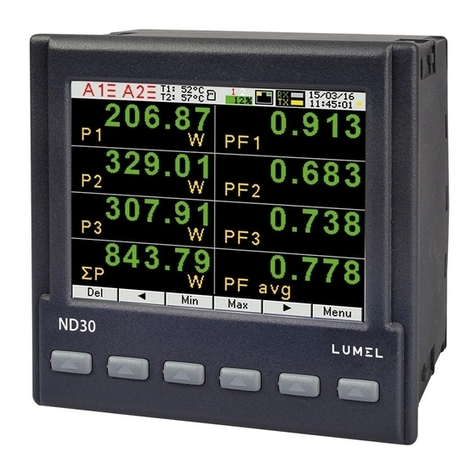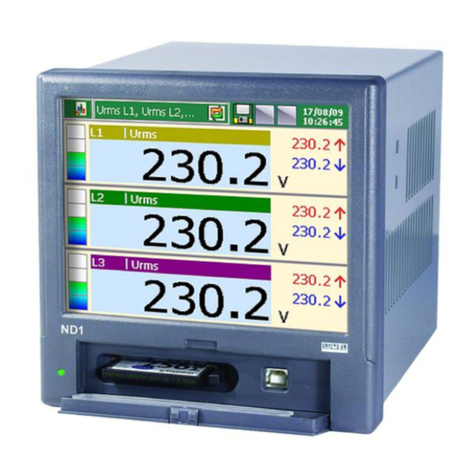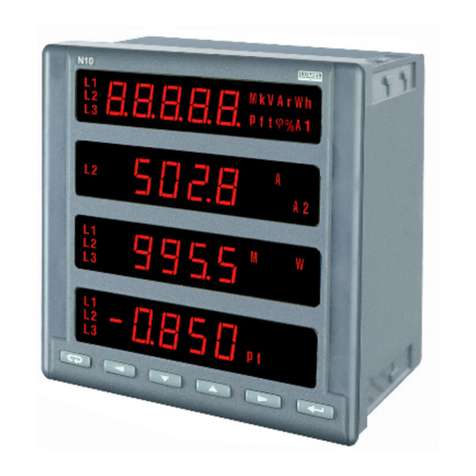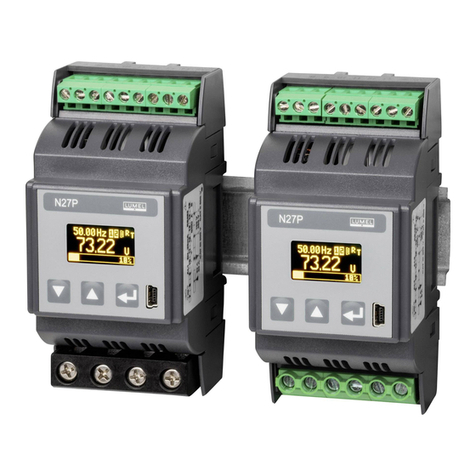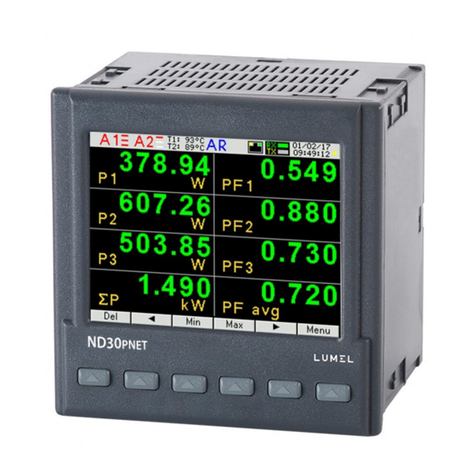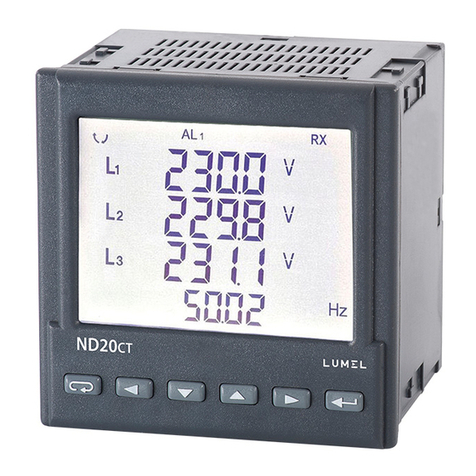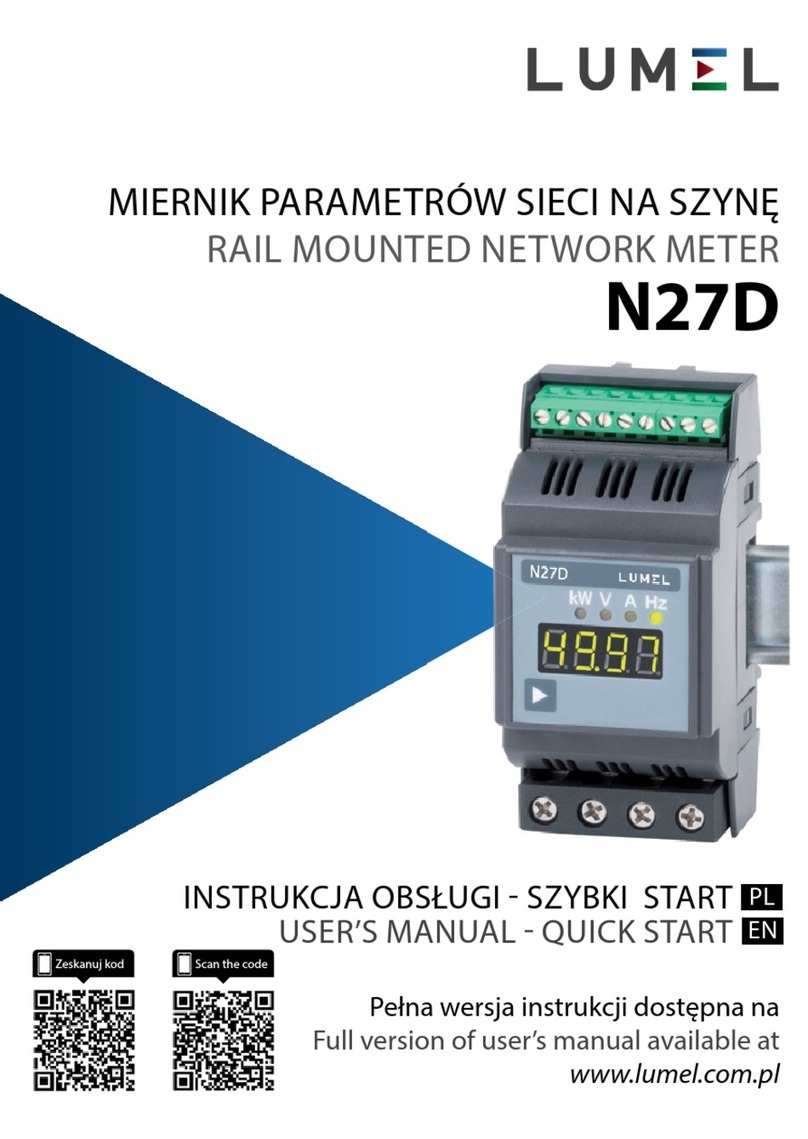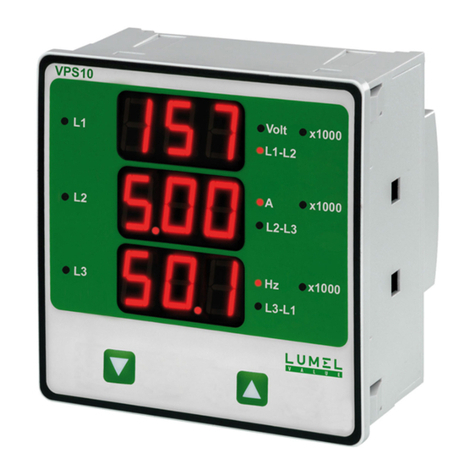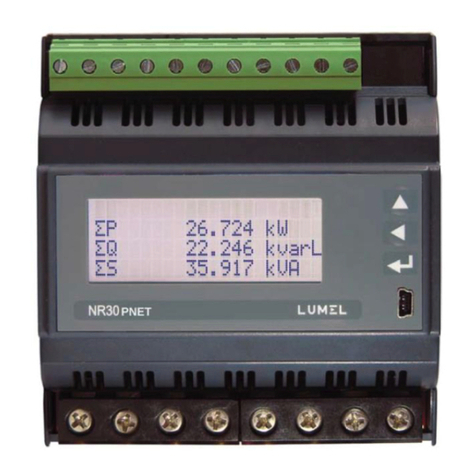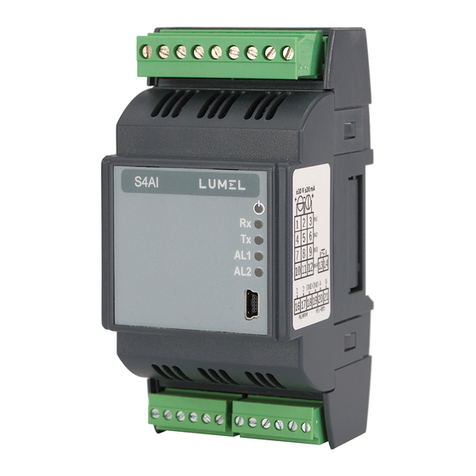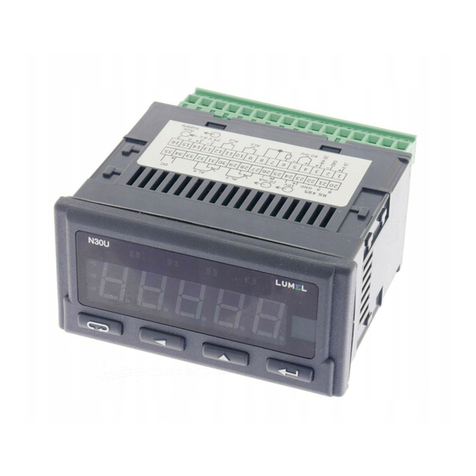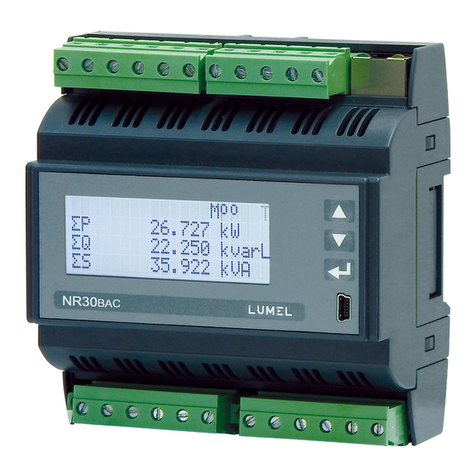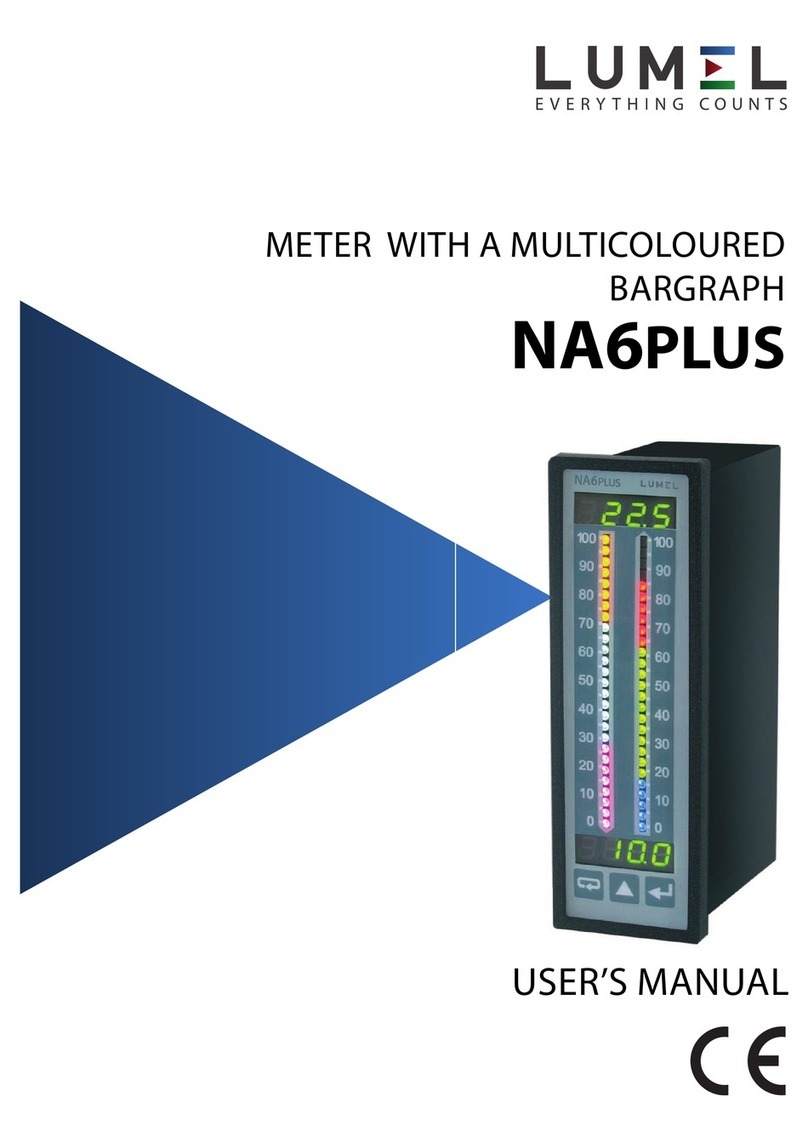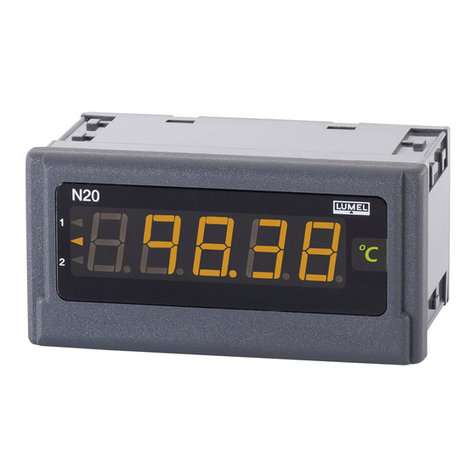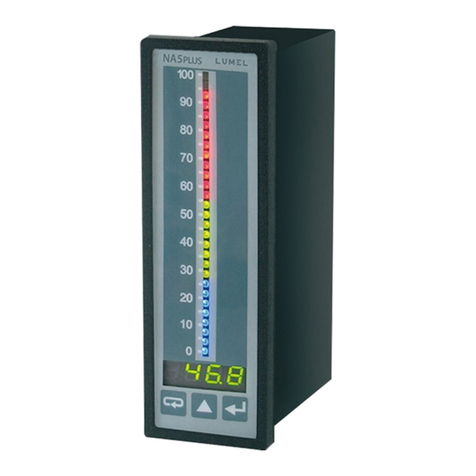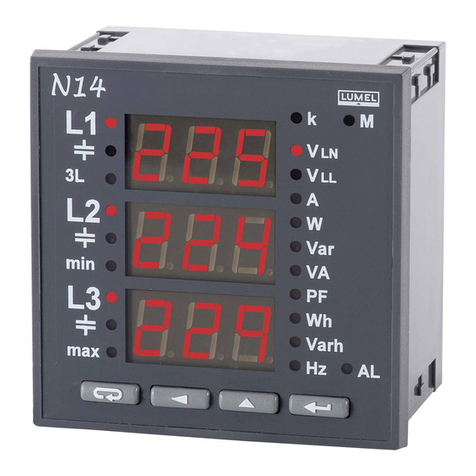N31U Service manual 2
Contents
1 Application......................................................................................................................................3
2 Meter set..........................................................................................................................................4
3 Basic requirements, operational safety............................................................................................5
4 Installation.......................................................................................................................................5
4.1 Installation method..................................................................................................................5
4.2 E ternal connection diagram...................................................................................................6
4.3 E amples of connecting the e ternal transducers....................................................................9
5 Service.............................................................................................................................................9
5.1 Description of the frontal plate................................................................................................9
5.2 Buttons' functions...................................................................................................................11
5.3 Programming meter parameters.............................................................................................12
5.3.1 How to change quantity of a selected parameter...........................................................14
5.3.2 Programmable meter parameters, default parameters....................................................15
5.4 Meter functions......................................................................................................................19
5.4.1 Measurement..................................................................................................................19
5.4.1.1 Averaging the measuring quantity..........................................................................20
5.4.1.2 Minimum and ma imum measuring values...........................................................20
5.4.1.3 Mathematical functions..........................................................................................21
5.4.1.4 Individual characteristic.........................................................................................21
5.4.2 Alarm output..................................................................................................................23
5.5 RS-485 interface....................................................................................................................24
5.5.1 Connection.....................................................................................................................24
5.5.2 Description of the MODBUS protocol implementation................................................25
5.5.3 Implemented functions of MODBUS protocol..............................................................25
5.5.4 Map of the registers........................................................................................................26
5.5.4.1 Registers 4000 – 4024............................................................................................26
5.5.4.2 Registers 4200 – 4219............................................................................................29
5.5.4.3 Registers 7500 – 7530 and 7000 – 7030................................................................30
5.5.4.4 Registers 7600 – 7668 and 7200 – 7336................................................................31
6 Error codes.....................................................................................................................................33
7 Technical data................................................................................................................................34
8 Ordering code................................................................................................................................36












